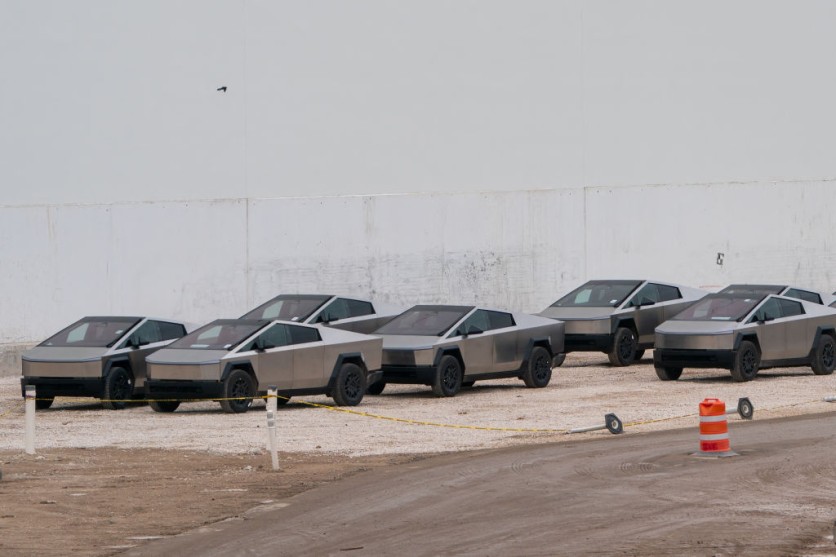Tesla's Cybertruck's unique design and breakthrough technologies have revolutionized the automobile industry and become a hot topic among electric vehicle fans.
Tesla's Head Designer Franz von Holzhausen and Vice President of Engineering Lars Moravy discussed the Tesla Cybertruck's unique characteristics in one episode of Jay Leno's Garage.
A Divisive Unique Design
According to Hot Cars, Tesla wants to make the Cybertruck a highly recognizable pickup, according to its design philosophy. To achieve this, Tesla experimented, lining up various pickups without badges, leading to the distinctive design of the Cybertruck. The vehicle's bulletproof construction, using stainless steel for its body, not only adds durability but also influences its angular design.

Tesla co-founder and CEO Elon Musk introduces the newly unveiled all-electric battery-powered Tesla Cybertruck at the Tesla Design Center in Hawthorne, California, on November 21, 2019.
Designing the Cybertruck without curves improves efficiency, with the front bumper's minimum curves reducing drag to 0.335. The top-to-bottom huge single windshield wiper combines engineering and aesthetics to clean the view for passengers and cameras.
Lars Moravy explained how the Cybertruck's 48-volt battery and air suspension, which give it exceptional body control and a comfortable ride, power its off-road prowess. Off-road modes like Baja mode showcase the vehicle's adaptability to different terrains.
Efficient Charging, Strategic Pricing
Despite setbacks, the Tesla Cybertruck has garnered significant attention, standing out in a market flooded with conventional electric vehicles. Its polarizing design has sparked diverse reactions, contributing to Tesla's prominence, even as its US EV sales declined by 50% last quarter.
Challenging the perception of limited electric vehicle range, the Cybertruck's AWD models offer an estimated 340-mile range. An optional "range extender" battery increases the range to over 440 miles, and efficient charging through Tesla's Supercharger network adds up to 136 miles in 15 minutes.
Cybertruck Early Setbacks
However, per a previous report of TechTimes, the Cybertruck's development at Tesla's Austin plant faces challenges, particularly in mass-producing cars from stainless steel. Elon Musk acknowledged these hurdles, revising the production target to 24,000 units per year due to quality validation and scaling issues with dry-coating, especially near the battery cathode.
Reports indicate that scaling up 4680 battery manufacturing, a key component for the Cybertruck presents a significant challenge. Musk's ambition of creating 200,000 Cybertrucks per year and 250,000 by 2025 is delayed by Tesla's slow 4680 battery prototype-to-mass-scale manufacture.

Moreover, the controversy surrounding the Cybertruck extends beyond its design, with Elon Musk's recent controversial actions affecting Tesla's public image. Early supporters express disillusionment, impacting the brand's once-sexy image.
As the Cybertruck transitions from staged presentations to real-world scenarios, its success remains uncertain. The vehicle's reception among potential buyers is varied, with concerns about functionality, safety, and alignment with traditional truck expectations. The Cybertruck, described as an "inkblot test" by Jason Hill, head designer at EV maker Aptera, invites projections and perceptions into the unconventional vehicle, per E&E News.
Nevertheless, the Tesla Cybertruck revolutionizes pickup truck design and technology. As more Cybertrucks reach the road, they will demonstrate Tesla's ambition for electric transport despite manufacturing constraints.
Related Article: Ontario Startup Arc Motor Company Converts Vintage Cars to EVs with Tesla Batteries; Price Starts at $75,000!

![Apple Watch Series 10 [GPS 42mm]](https://d.techtimes.com/en/full/453899/apple-watch-series-10-gps-42mm.jpg?w=184&h=103&f=9fb3c2ea2db928c663d1d2eadbcb3e52)



